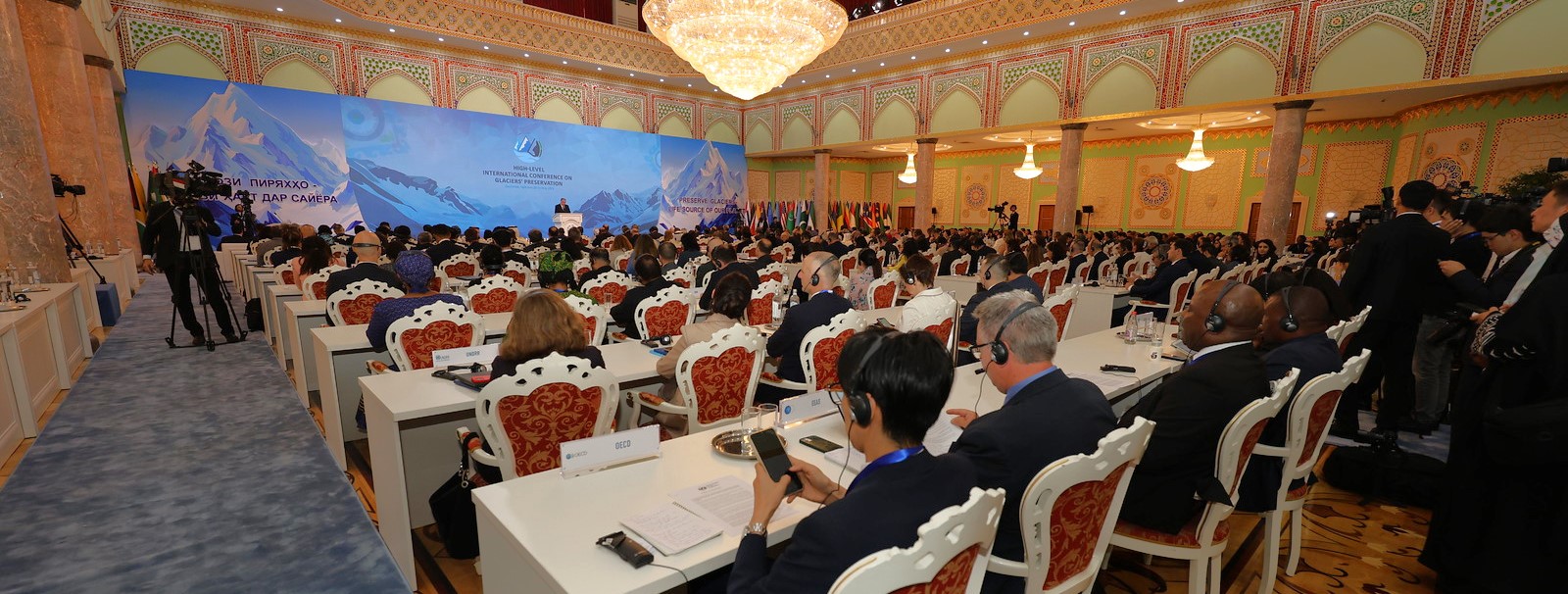Dushanbe, Tajikistan, 29-30 May 2025 – The High-Level International Conference on Glacier Preservation concluded its work, bringing together more than 1,500 representatives from national environmental authorities, international organizations, the scientific community, development partners, as well as youth and civil society. The conference served as a key international event in the region, aimed at strengthening cooperation and aligning approaches to glacier preservation and climate change adaptation in Central Asia.

Official opening of the High-Level International Conference on Glaciers Preservation. Photocredit to organizers of the event.
In advance of the main conference day, eight thematic forums and eighteen side events were held. Notably, the Ministerial Dialogue on Climate Resilience, Glacier Preservation, and Water Cooperation served as a vital platform for uniting efforts at the intersection of policy, science, and practice to promote sustainable water management across the region. Ministers of Environment from Central Asian countries exchanged views on national strategies for climate adaptation, transboundary water cooperation, and glacier preservation, and also considered the framework for a future Regional Programme to support climate research. The forum promoted the integration of glacier preservation into broader cross-border and cross-sectoral water cooperation, engaging public authorities, academia, women and youth, the private sector, and financial institutions.

Parallel Sessions at work. Photocredit to organizers of the event.
One of the key events of the first day was the Parallel Session on “Partnerships for Climate Change, Glaciers and Transboundary Cooperation in Central and West Asia.” Participants examined the impacts of glacier melt and the potential of partnerships to support regional adaptation in Central Asia. Preliminary findings from the Asian Development Bank’s regional programme Glaciers to Farms and relevant permafrost studies were presented.
The parallel sessions on the second day brought the discussion to the international level, focusing on scaling up glacier preservation efforts and mainstreaming them into the global climate agenda. Sessions such as “Glacier Projections and Emissions: How Much Can a 1.5°C Pathway Save?” and “Pact for the Future: How the Pact Can Inform Glacier Preservation” demonstrated how international commitments, including those under the United Nations, can contribute to the protection of glaciers and the advancement of a sustainable future.
Representatives of the Scientific-Information Centre of the Interstate Commission on Sustainable Development (SIC ICSD) took part in the conference’s parallel sessions and emphasized the importance of glacier and mountain ecosystem preservation for achieving the priorities of the Regional Environmental Programme for Sustainable Development in Central Asia (REP4SD). In their interventions, they stressed the need to strengthen interagency cooperation, enhance the exchange of scientific data, and establish sustainable regional cooperation mechanisms, particularly in the context of climate change and water security. The conference outcome document containing recommendations is available here.
The event supports the achievement of:
| Priority Area of REP4SD No 4 dedicated to SDG 13: “Take urgent action to combat climate change and its impacts” |
| 4.4 Monitoring of the glaciers’ condition in Central Asia |
| Priority Area of REP4SD No 2 dedicated to SDG 6 on "Ensure Availability and Sustainable Management of Water and Sanitation for All" |
| 2.2 Ensuring efficiency of water quality monitoring in the Aral Sea Basin. |



